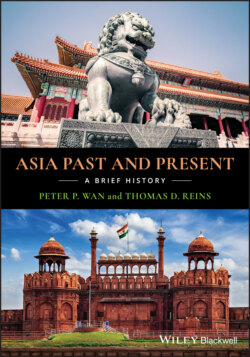Читать книгу Asia Past and Present - Peter P. Wan - Страница 15
What Is Asia?
ОглавлениеThis book will explore Asia chiefly from historical, social, and economic angles. Historically it will attempt to put into context the long course of events generated by numerous social and economic entities, ranging organizationally from tribes to nation‐states and chronologically from Paleolithic times to the early twenty‐first century. This will involve a good deal of political history, the container within which domestic and international activities can most easily be examined. Because there is no physically discrete Asia but instead a Eurasian landmass, and since “the division between Europe and Asia is entirely arbitrary,” we will focus on terrain, including India, Afghanistan, and Central Asia eastward and Japan and New Guinea westward. The northern frontier will include Mongolia and the Russian Far East and extend southward to Indonesia. These territorial frontiers contain the civilizations that have most influenced what most scholars consider to be Asia.2 Clearly the expansion of Islam and Western nations into Asia also greatly contributed to Asia’s development, but India’s and China’s thought and institutions still constitute the cultural foundations, albeit reinforced by non‐Asian sources, upon which contemporary Asian nations build their societies.
Asia in the early twenty‐first century.
Source: From https://www.cia.gov/library/publications/the‐world‐factbook/graphics/ref_maps/political/jpg/asia.jpg. Central Intelligence Agency. Public Domain.
